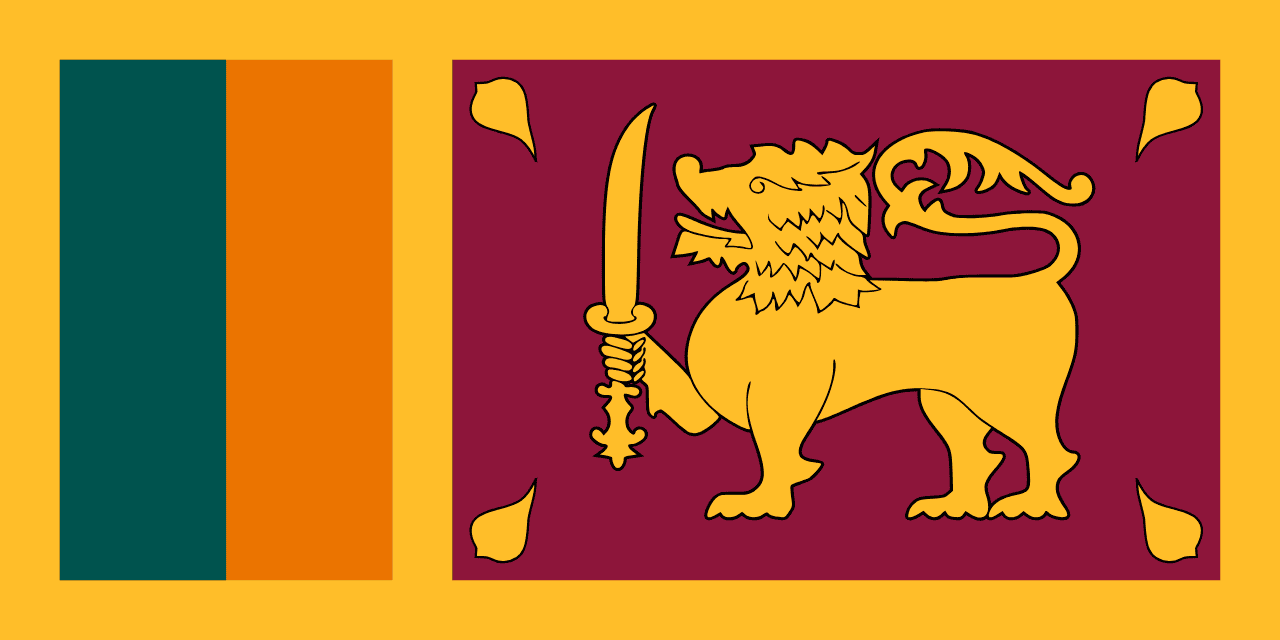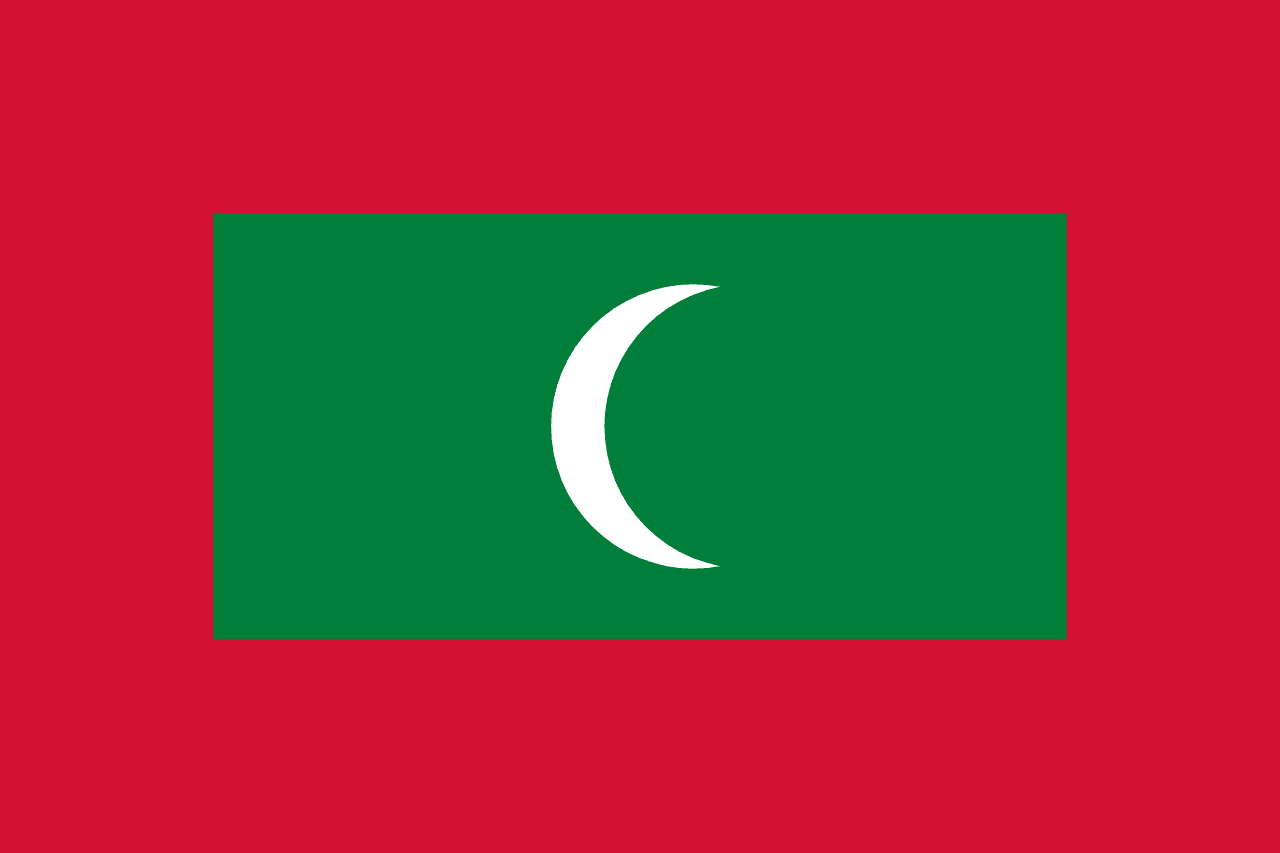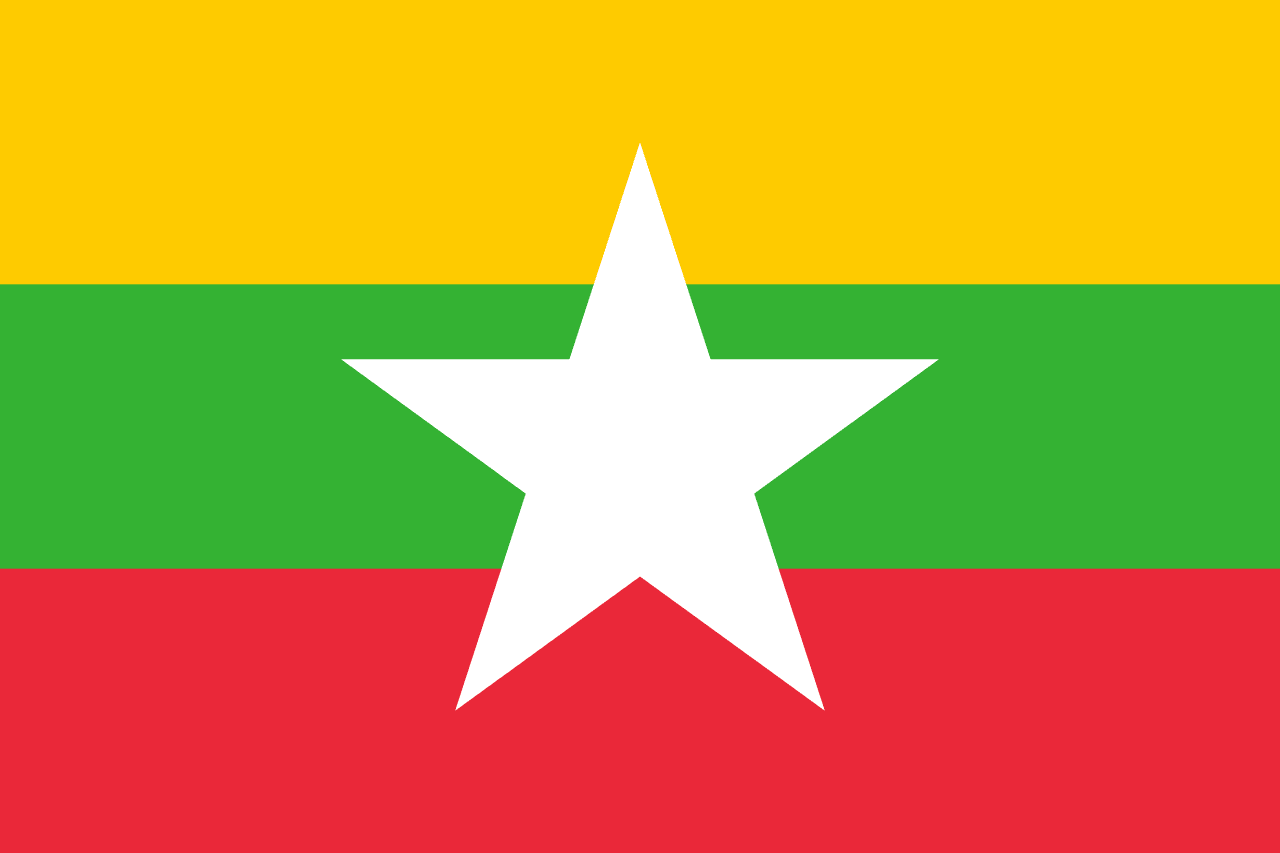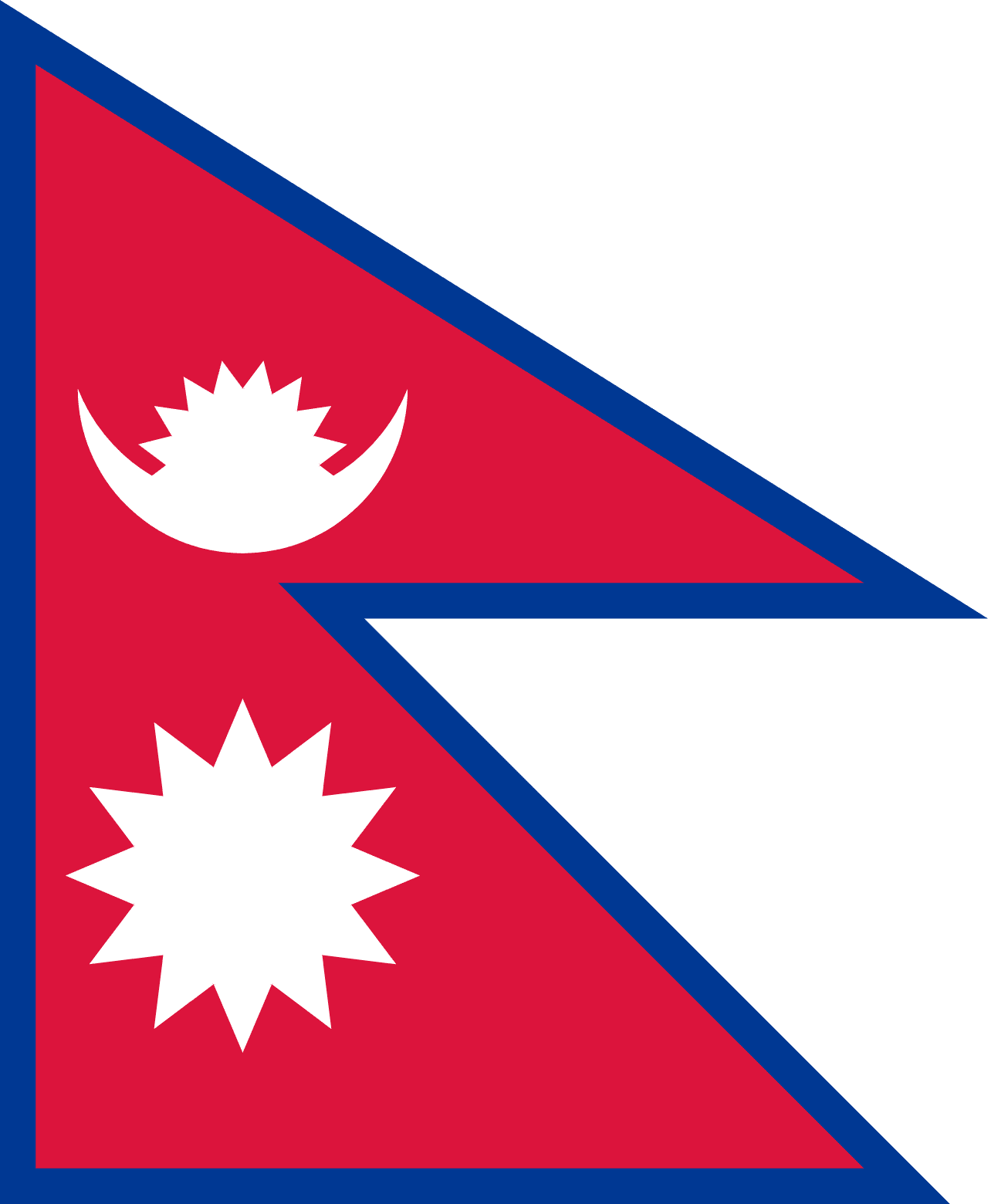Sri Lanka Flag Meaning
A maroon field with a golden lion holding a sword, surrounded by four golden bo leaves, with vertical stripes of orange and green on the hoist side, representing the Sinhalese majority, Tamil and Muslim minorities, Buddhism, and the courage and strength of the Sri Lankan people.
- Continent
- Asia
- Adopted
- 1972
- Ratio
- 1:2
- Colors
- orange, green, maroon, yellow, gold
- Designer
- Nissanka Wijeyeratne

Symbolism
Golden Lion: Represents the Sinhalese people and their courage, with the sword symbolizing the sovereignty and strength of the nation, derived from the ancient royal standards of the Kandyan Kingdom.
Four Bo Leaves: Represent the four Buddhist virtues of loving-kindness, compassion, sympathetic joy, and equanimity, symbolizing the Buddhist foundation of Sri Lankan culture and spirituality.
Orange Stripe: Represents the Tamil minority population of Sri Lanka, symbolizing their significant contribution to the country's culture, economy, and heritage despite being a numerical minority.
Green Stripe: Represents the Muslim minority population and other religious minorities, symbolizing the diversity of faiths and ethnicities that contribute to Sri Lankan society.
Maroon Field: Represents the Sinhalese majority and Buddhism, with the deep red color symbolizing the noble heritage of the island nation and its ancient Buddhist civilization.
Yellow Border: Represents the unity of all Sri Lankan people regardless of ethnicity or religion, symbolizing the golden island's prosperity and the hope for harmony among all communities.
History
- 6th Century BC: According to legend, Prince Vijaya arrived from India and established the first Sinhalese kingdom, beginning the recorded history of Sri Lankan civilization and Buddhist culture.
- 3rd Century BC: Buddhism was introduced by Mahinda, son of Emperor Ashoka, becoming the dominant religion and shaping Sri Lankan culture, art, and social organization for over 2,000 years.
- 5th-15th Century: Various Sinhalese kingdoms including Anuradhapura and Polonnaruwa flourished, building magnificent temples, irrigation systems, and cities while facing periodic Tamil invasions from South India.
- 1505-1815: Portuguese, Dutch, and British colonial rule gradually conquered the coastal areas and finally the entire island, exploiting spice production and later establishing tea and rubber plantations.
- 1830s-1930s: British colonial policies brought Indian Tamil laborers to work on plantations, while English education created a Westernized elite and growing independence movements among both Sinhalese and Tamils.
- February 4, 1948: Ceylon gained independence from Britain as a dominion within the Commonwealth, initially maintaining democratic governance and ethnic cooperation under moderate leadership.
- 1956: The 'Sinhala Only' language policy sparked ethnic tensions as Tamil political rights were reduced, beginning the marginalization that would eventually lead to armed conflict.
- May 22, 1972: Ceylon became the Republic of Sri Lanka, adopting the current flag and constitution while continuing policies that favored the Sinhalese majority over Tamil and Muslim minorities.
- 1983-2009: The Sri Lankan Civil War between government forces and the Liberation Tigers of Tamil Eelam (LTTE) killed over 100,000 people and devastated the country for 26 years.
- May 18, 2009: The civil war ended with the military defeat of the LTTE, but allegations of war crimes by both sides and failure to address root causes have hindered reconciliation.
- 2019-2022: Economic mismanagement, COVID-19 impact, and policy failures led to severe economic crisis with shortages of fuel, medicine, and food, sparking mass protests.
- 2022-Present: President Gotabaya Rajapaksa was forced to resign after massive protests, while the country negotiates with the IMF for bailout assistance to address the worst economic crisis since independence.
Trivia
- Sri Lanka is often called the 'Pearl of the Indian Ocean' due to its shape, beauty, and strategic location along ancient maritime trade routes between Asia and the Middle East.
- The flag represents the world's fourth-largest tea producer, with Ceylon tea being renowned globally for its quality and distinctive flavor from high-altitude plantations.
- Sri Lanka has the highest literacy rate in South Asia at over 92%, reflecting the country's long tradition of education and the Buddhist emphasis on learning and scholarship.
- The country is famous for its precious gemstones, particularly sapphires, rubies, and the rare blue sapphire, with gem mining being an important traditional industry.
- Sinhala and Tamil are the official languages, with English widely used, reflecting the ethnic diversity and colonial heritage that continue to shape contemporary society.
- The flag flies over an island with eight UNESCO World Heritage Sites, including ancient cities like Anuradhapura and Polonnaruwa that showcase 2,500 years of Buddhist civilization.
- Sri Lankan cuisine features rice and curry as staples, with coconut, spices, and seafood playing central roles, influenced by Sinhalese, Tamil, Muslim, and colonial traditions.
- Buddhism is practiced by about 70% of the population (mostly Sinhalese), with Hindu Tamils (13%), Muslims (10%), and Christians (7%) forming significant minorities.
- The country has produced world-class cricketers and won the Cricket World Cup in 1996, with cricket serving as one of the few unifying factors across ethnic divisions.
- Traditional arts include classical dance forms like Kandyan dance, ancient mask-making traditions, and distinctive architectural styles seen in Buddhist temples.
- Sri Lanka was the first country in the world to have a female prime minister (Sirimavo Bandaranaike in 1960) and has had several female political leaders since.
- The island has remarkable biodiversity with many endemic species, though deforestation and development have threatened wildlife including elephants and leopards.
- Ayurveda traditional medicine remains popular alongside modern healthcare, with numerous spas and treatment centers attracting medical tourists from around the world.
- The flag represents a country struggling with post-civil war reconciliation, economic development, and building inclusive institutions that serve all ethnic communities fairly.
- Climate change poses significant threats to Sri Lanka through sea level rise, extreme weather events, and changing rainfall patterns affecting agriculture and coastal communities.
Related Countries

Maldives
Asia
A green rectangle centered on a red field with a white crescent facing the hoist, representing Islam, the peace of the islands, and the blood of heroes who defended this coral atoll nation in the Indian Ocean.

India
Asia
Three horizontal stripes of saffron, white, and green with a navy blue Ashoka Chakra (24-spoke wheel) in the center, representing courage and sacrifice, peace and truth, faith and fertility, and the eternal wheel of law in Indian philosophy.

Bangladesh
Asia
A dark green field with a red circle positioned slightly toward the hoist side, representing the lush Bengali landscape and the sun rising over Bengal, as well as the blood shed during the Liberation War of 1971 and the new dawn of independence.

Myanmar
Asia
A horizontal tricolor of yellow, green, and red with a large white five-pointed star in the center. Adopted in 2010, the flag symbolizes unity and a new era for Myanmar.

Nepal
Asia
The only national flag that is non-rectangular, composed of two stacked crimson pennons with blue borders, featuring a white moon and a white sun. It reflects Nepal’s distinct identity, culture, and Hindu-Buddhist traditions.

Thailand
Asia
Five horizontal stripes with red at top and bottom, white in the second and fourth positions, and blue in the center, representing the nation and the people, the purity of Buddhism, and the monarchy, designed by King Rama VI during World War I to show solidarity with the Allies.